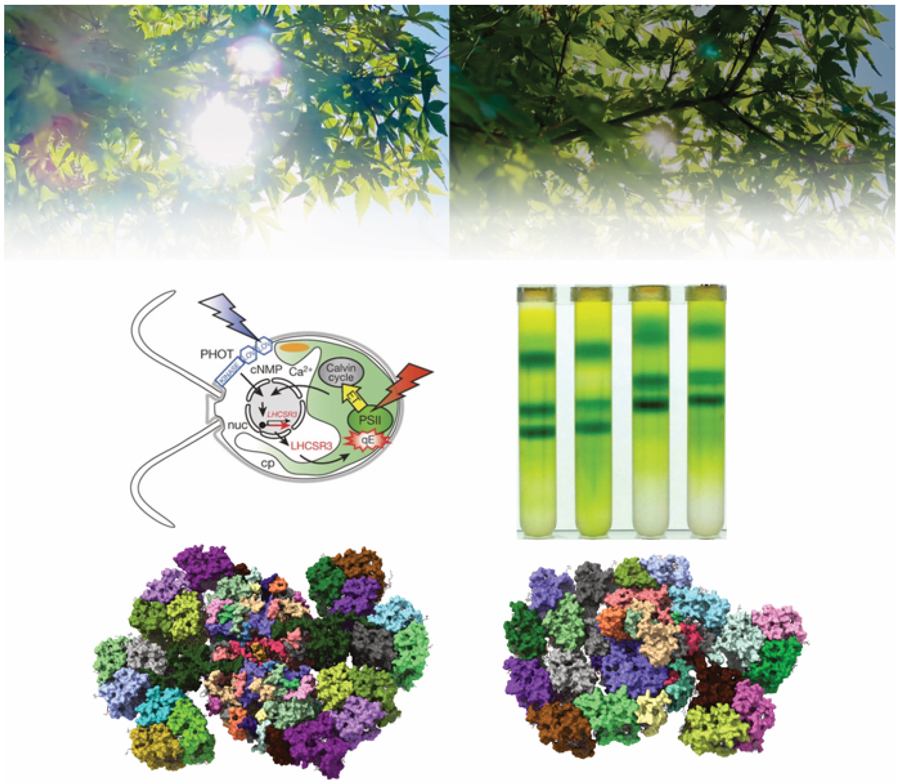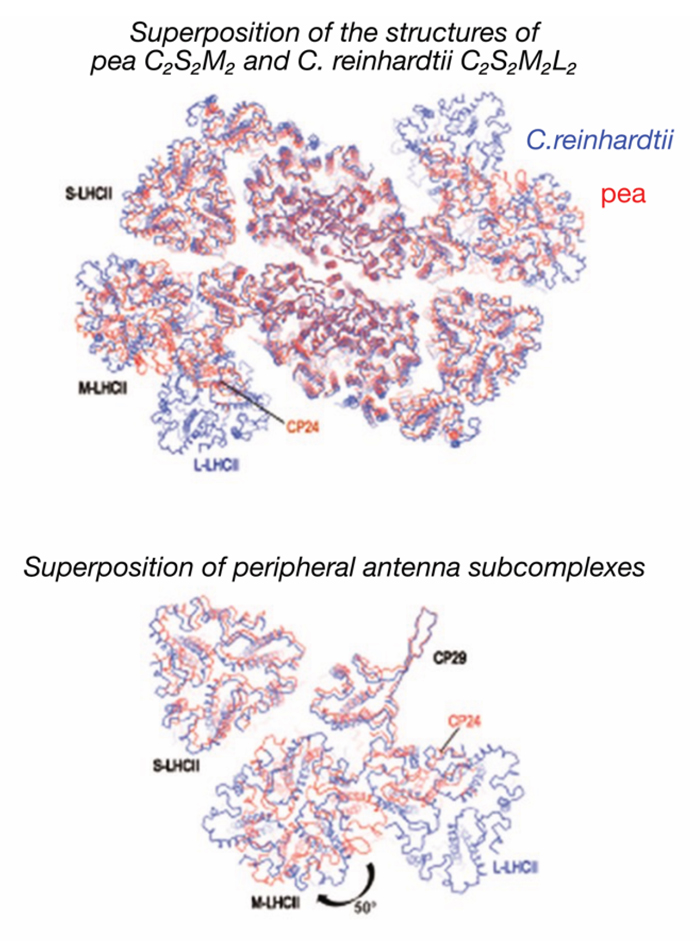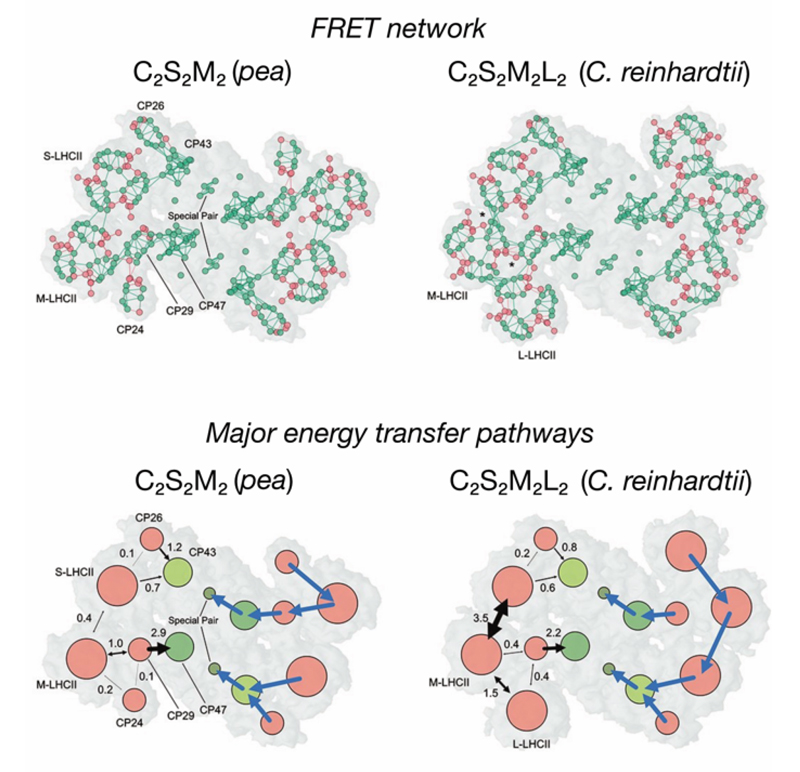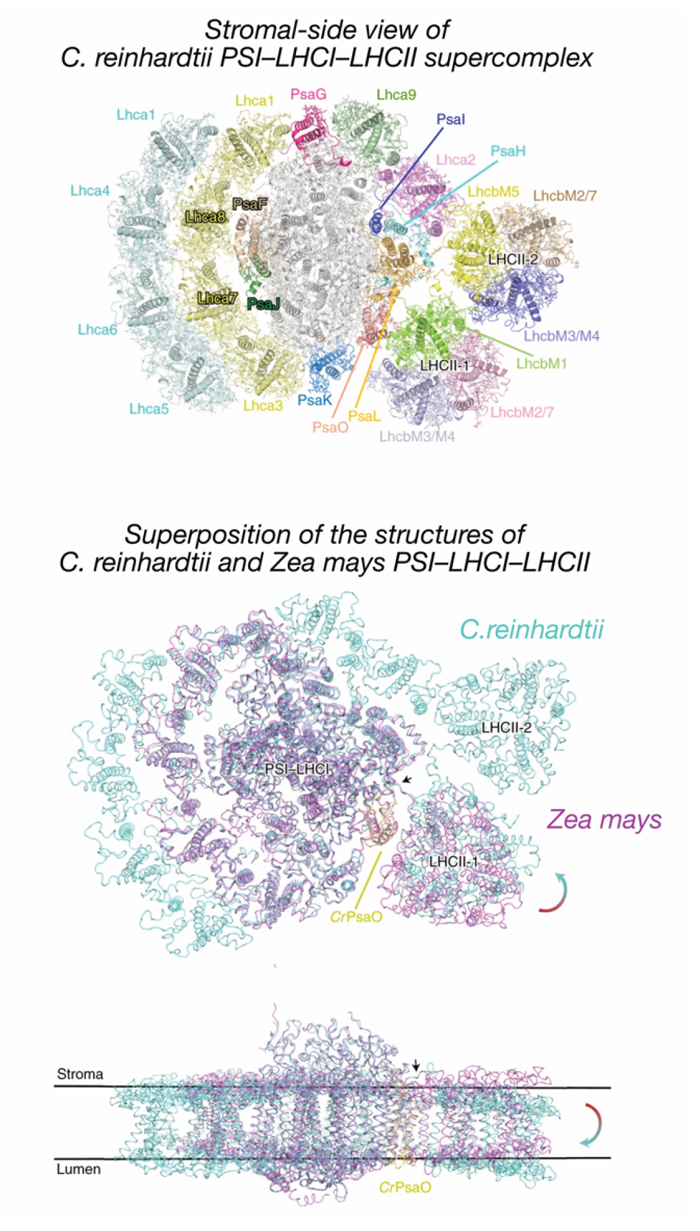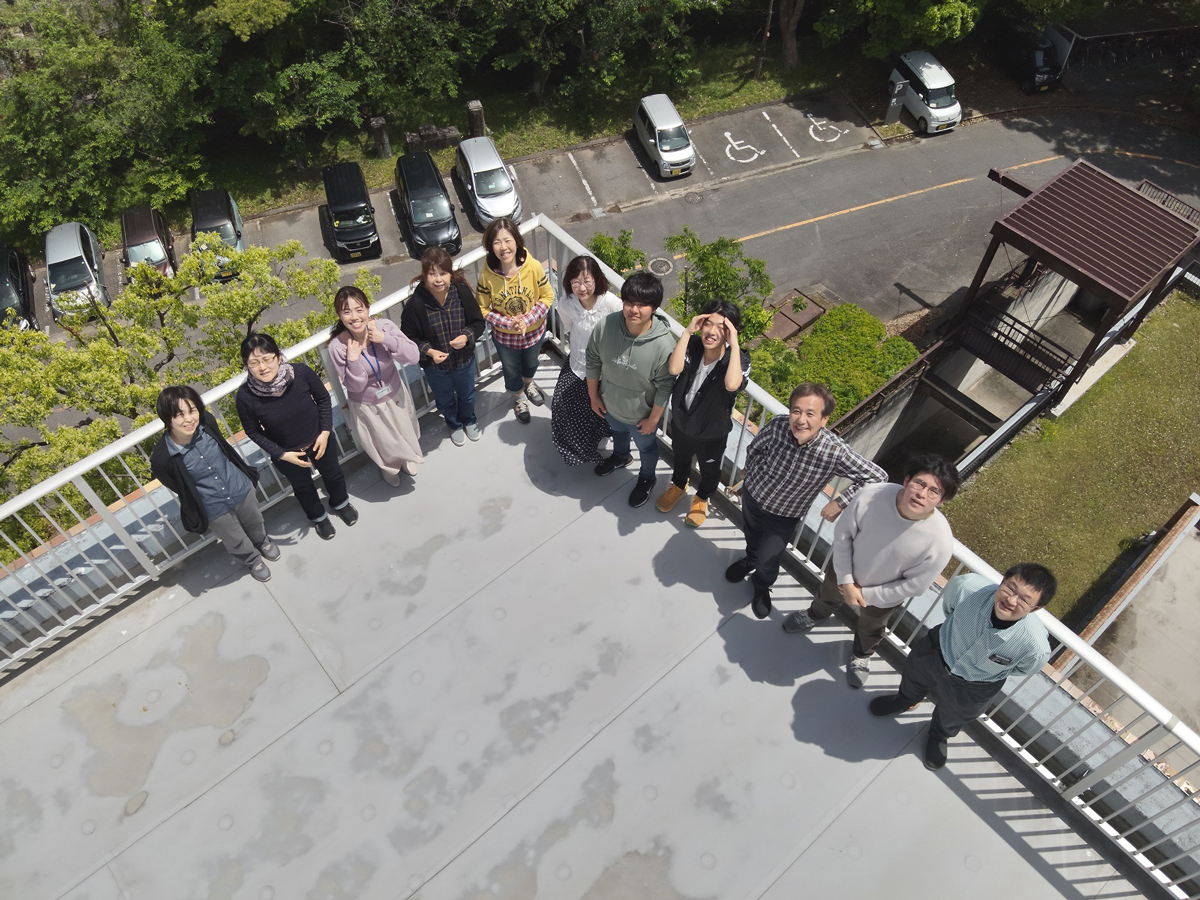Kubota, M., Kim, E., Ishii, A., and Minagawa, J. (2024). The blue-green light-dependent state transition in the marine phytoplankton
Ostreococcus tauri. New Phytol.
244, 1837-1846.
https://doi.org/10.1111/nph.20137
Kosugi, M., Ohtani, S., Hara, K., Toyoda, A., Nishide, H., Ozawa, S.-I., Takahashi, Y., Kashino, Y., Kudoh, S., Koike, H., and Minagawa, J. (2024). Characterization of the far-red light absorbing light-harvesting chlorophyll a/b binding complex, a derivative of the distinctive Lhca gene family in green algae. Front. Plant Sci.
15, 1409116.
Ishii, A., Shan, J., Sheng, S., Kim, E., Watanabe, A., Yokono, M., Noda, C., Song, C., Murata, K., Liu, Z., and Minagawa, J. (2023). The photosystem I supercomplex from a primordial green alga
Ostreococcus tauri harbors three light-harvesting complex trimers. eLife
12, e84488.
Pan, X., Tokutsu, R., Li, A., Takizawa, K., Song, C., Murata, K., Yamasaki, T., Liu, Z., Minagawa, J., and Li, M. (2022). Structural basis of LhcbM5-mediated state transitions in green algae. Nat. Plants
7, 1119-1131.
Kim, E., Watanabe, A., Duffy, C. D. P., Ruban, A. V., and Minagawa, J. (2020). Multimeric and monomeric photosystem II supercomplexes represent structural adaptations to low- and high-light conditions. J Biol. Chem.
295, 14537-14545.
Sheng, X., Watanabe, A., Li, A., Kim, E., Song, C., Murata, K., Song, D., Minagawa, J., and Liu, Z. (2019). Structural insight into light harvesting for photosystem II in green algae. Nat. Plants
5, 1320-1330.
Tokutsu, R., Fujimura-Kamada, K., Matsuo, T., Yamasaki, T., and Minagawa, J. (2019). The CONSTANS flowering complex controls the protective response of photosynthesis in the green alga
Chlamydomonas. Nat. Commun.
10, 4099.
Aihara, Y., Fujimura-Kamada, K., Yamasaki, T., and Minagawa, J. (2019). Algal photoprotection is regulated by the E3 ligase CUL4-DDB1
DET1. Nat. Plants
5, 34-40.
Kosuge, K., Tokutsu, R., Kim, E., Akimoto, S., Yokono, M., Ueno, Y., and Minagawa, J. (2018). LHCSR1-dependent fluorescence quenching is mediated by excitation energy transfer from LHCII to photosystem I in
Chlamydomonas reinhardtii. Proc. Natl. Acad. Sci. USA
115, 3722-3727.
Petroutsos, D., Tokutsu, R., Maruyama, S., Flori, S., Greiner, A., Magneschi, L., Cusant, L., Kottke, T., Mittag, M., Hegemann, P., Finazzi, G., and Minagawa, J. (2016). A blue light photoreceptor mediates the feedback regulation of photosynthesis. Nature
537, 563-566.
Tokutsu, R., and Minagawa, J. (2013). Energy-dissipative supercomplex of photosystem II associated with LHCSR3 in
Chlamydomonas reinhardtii. Proc. Natl. Acad. Sci. USA
110, 10016-10021.
Iwai, M., Takizawa, K., Tokutsu, R., Okamuro, A., Takahashi, Y., and Minagawa, J. (2010). Isolation of the elusive supercomplex driving cyclic electron transfer in photosynthesis. Nature
464, 1210-1213.





